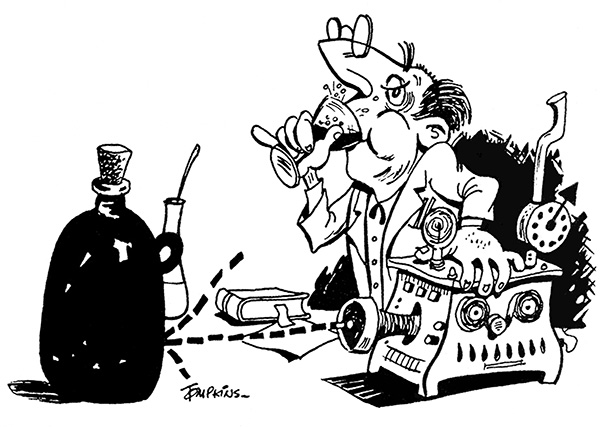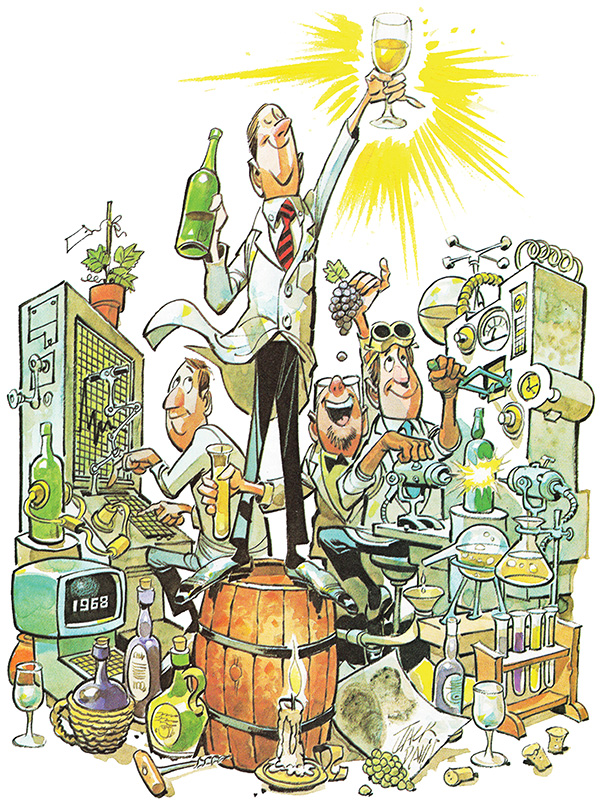Thank you for your support and cheers to your health!

A message from CEO, Geofrey Wyatt
The holidays approach—whether we want them to or not—and during this time of living through the COVID pandemic there is a beverage that is frequently associated with toasting to good health. I’m not sure what drink you’re thinking of, but in my case I’m thinking of wine. And I can’t think about wine without being reminded of a famous expression that’s credited to Benjamin Franklin: “Wine is constant proof that God loves us and wants to see us happy.”
But as you are reading our last 2020 issue of Multi-Angle you may wonder what the discussion of wine has to do with light scattering and Wyatt Technology. Well, there is a strong connection between Wyatt and wine (in a completely benign sense of the word “connection”). During what would become the last days of my father’s (Dr. Philip Wyatt) previous light scattering company, Science Spectrum, a slow Friday afternoon turned into a scientific “experiment” in tasting and testing wine in a light scattering instrument. The result of that afternoon was a letter Dr. Wyatt sent to Science (Science 12 Jun 1981: Vol. 212, Issue 4500, pp. 1212-1214 DOI: 10.1126/science.212.4500.1212) called “Days of Wine and Lasers.” After the letter was published no one, least of all my father, expected the firestorm of publicity that followed.
It seemed that everything from in-flight magazines, to newsweeklies to popular international science publications trumpeted the news that instruments would replace humans in tasting wines! One publication proclaimed that this was the advent of Buck Rogers (a science fiction character created in the late 1920’s!) wine, and others lamented the demise of “old world”, non-interventionist winemaking. Of course, there has always been plenty of science in winemaking, but it is frequently disguised to preserve the charm and romance so many of us associate with wine.
The cork is but one example of an area of winemaking that leaves wine susceptible to cork taint, and some wine producers—even very expensive wine producers—have now switched to screw tops (yes, really) which never impart off-putting tastes or smells. Scrupulous attention to cleanliness in the winery contributes to less of a chance of microbial contamination, and most wineries now possess refractometers to determine the Brix—or sugar—content. Science also virtually oversees the planting of most modern vineyards. Using sophisticated satellite mapping techniques, maximum sun exposure through the growing seasons can be calculated before any vines are even planted.


It shouldn’t come as a surprise that although no winery owns equipment as expensive and sophisticated as ours, there are plenty of government and academic research laboratories who have employed our instruments to take a deeper look into what makes wine, well, wine! As recently as August of this year, a wonderful publication appeared in the Journal of Chromatography A by scientists at the Ecole d'Ingénieurs de Purpan called “Fractionation and characterization of phenolic compounds and macromolecules in red wine by Asymmetrical Flow Field-Flow Fractionation” (https://doi.org/10.1016/j.chroma.2020.461464). The distribution and molar masses of tannins were investigated, and as any red wine or tea drinker knows tannins are an essential component of the beverage.
So this holiday, if you happen to be drinking wine, hold your glass up to the light and observe the color of the liquid. If it is a well-aged Bordeaux it may be a red, verging into a brick-like color. If it is a California Chardonnay it may be straw-like in color. What you have just noticed is the light scattering from all of the molecules, particles and other components in the wine. And those optical observables are taken to an entirely new level when wine is separated by FFF and analyzed by multi-angle light scattering.
We toast you and thank you again for being our customers and supporters. You really are the greatest on earth, and we would not be here without you!
